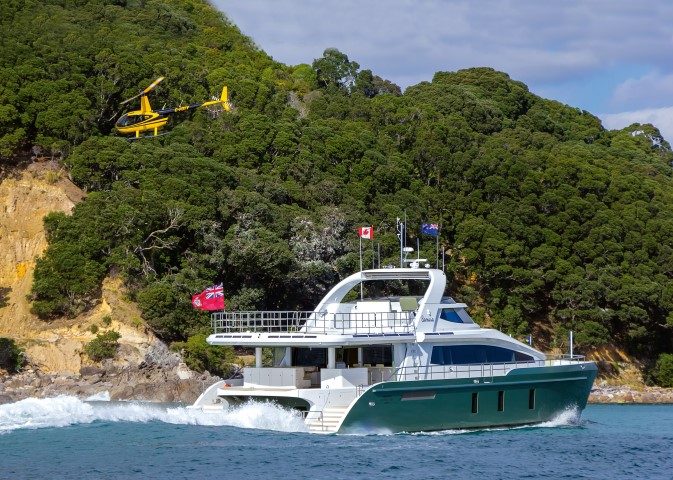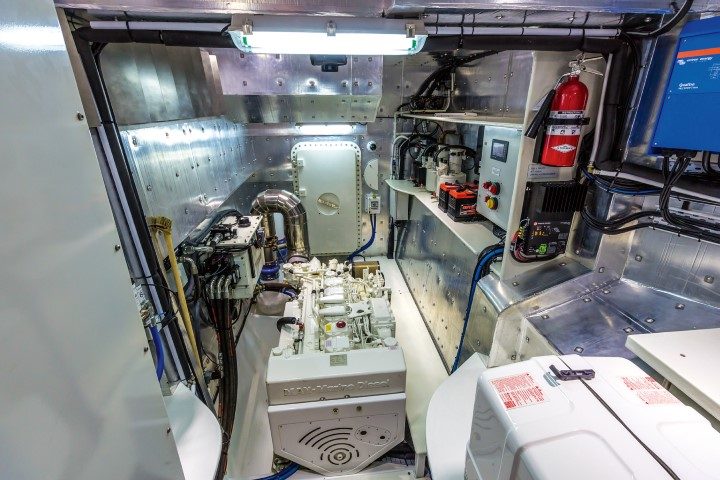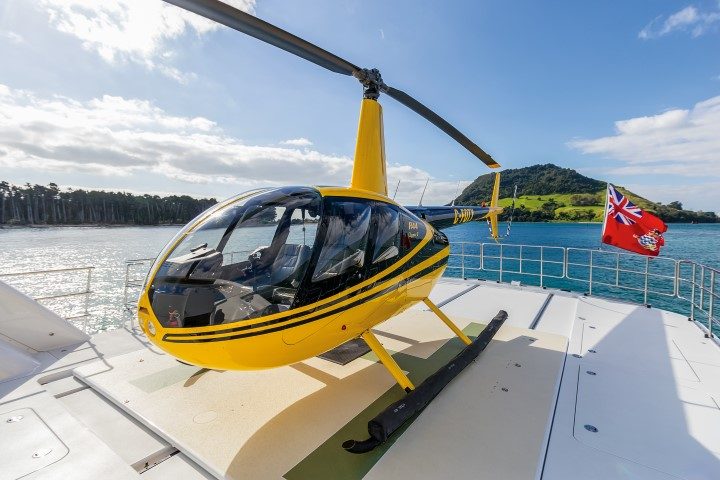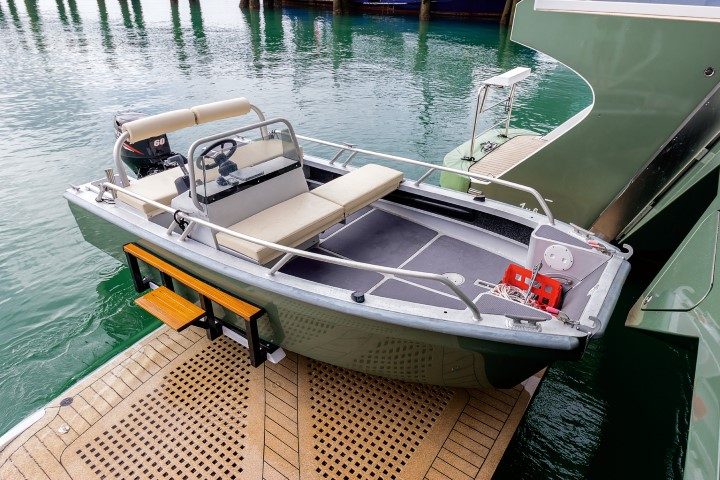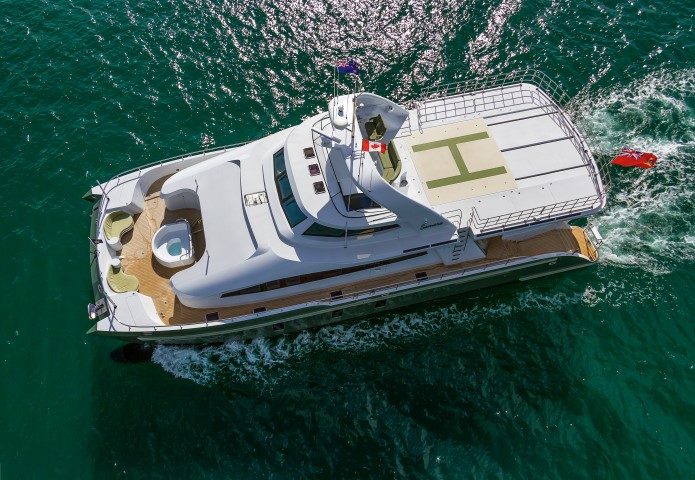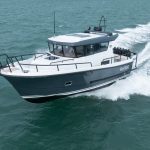‘Behemoth’ is a word which springs to mind or, perhaps more nautically, ‘leviathan’.
- Helicopter deck
- Super-efficient systems
- PLC control
- Spacious, individual interior
- Expedition-ready
- Engine rooms can become safe rooms
- Cruises 10-18 knots
- Huge range
- 24-volt DC appliances

